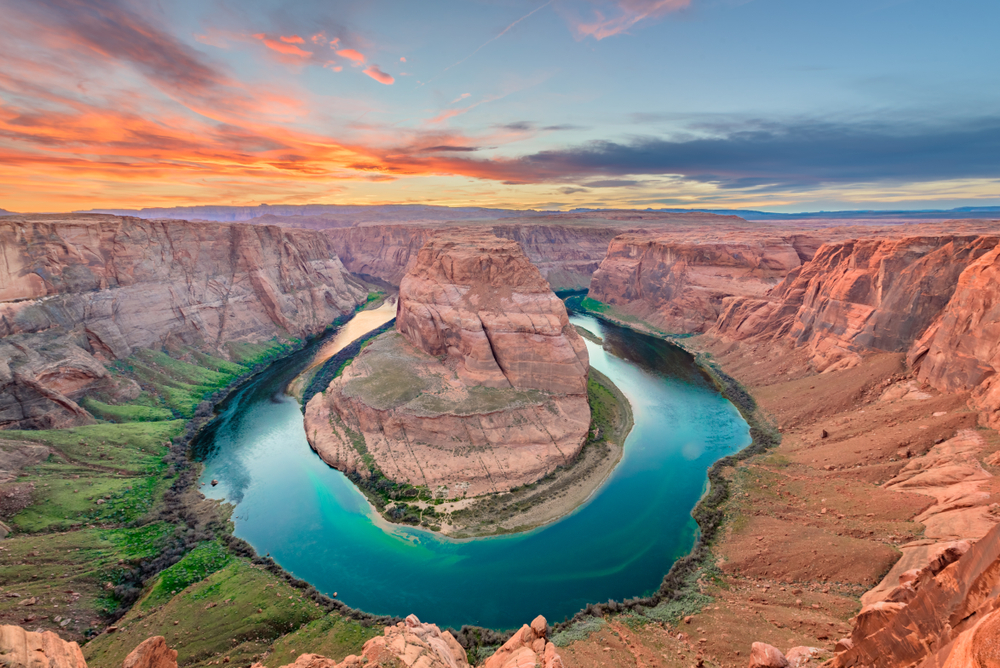You’ve seen pictures of the graceful, undulating red sandstone on Instagram, and now you have the opportunity to visit Antelope Canyon and Horseshoe Bend yourself. These are two of the most photographed natural wonders in the world, and you’ll find them near Page, Arizona. So get your camera, and prepare for an awesome, awe-inspiring road trip!
The best times for photography in Antelope Canyon are from the late spring through early fall; it’s also very hot and dry during this time of year, so keep that in mind before you head out.
Getting There
This is not a short drive; it will take you 4-5 hours to get there. First, you’ll get on the I-15 and go north to Washington, Utah. There, you’ll take Exit 16 on to State Hwy 9. Next, it’s UT-59 in Hurricane down to Colorado City AZ, where the road transitions into AZ-389. Keep going up through Fredonia to Kanab Utah. From Kanab, get on US-89 to Page. Be sure to top off your gas tank in the St. George area as well as in Kanab.
Along the way, you’ll pass through some amazing scenery; from Hwy 389 through Arizona, you’ll see majestic, red rock mesas reminiscent of Monument Valley in the distance. You can stop and get gas in Fredonia; this tiny, scenic community is the gateway to the North Rim of the Grand Canyon.
Once you reach Kanab, the scenery changes to red rocks sprinkled with pinyon and juniper forests. Then it’s back down into the red rock desert. Hwy 89 passes through the lower end of the Grand Staircase-Escalante National Monument. This trip will definitely take longer than four hours, because you’ll want to stop along the way to take pictures and revel in the magnificence of this beautiful desert.
You’ll finally arrive in Page, Arizona. Antelope Canyon and Horseshoe Bend are 10-miles apart on AZ-98. Horseshoe Bend is on Lake Powell, and Antelope Canyon is on the Navajo Reservation. Before you leave Las Vegas, arrange for a tour of Antelope Canyon; it’s on the Navajo Reservation, and you’re not allowed there without a tour, and tours book up quickly.
Page Arizona
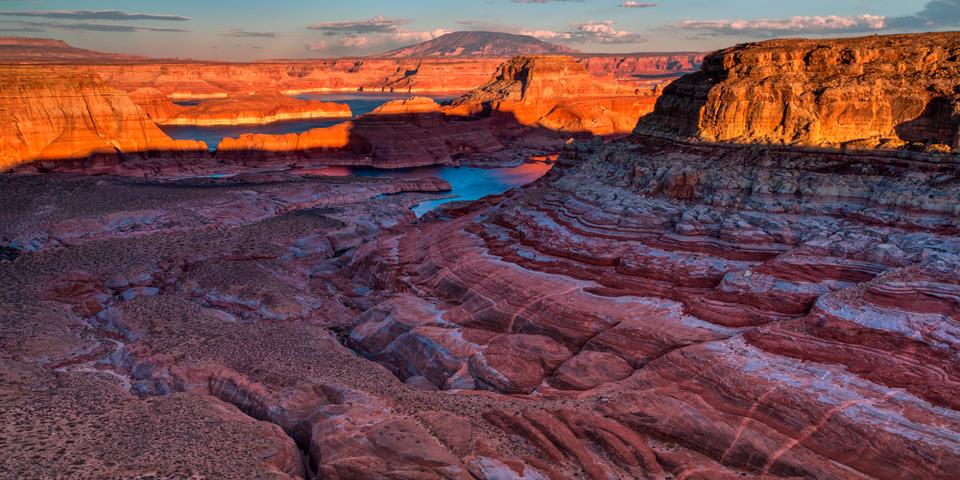
Page began in 1957 as a community to house the workers who built Glen Canyon Dam on the Colorado River. The city sits 600 feet above Lake Powell, and since the completion of the dam, it’s been a hub for recreation around the lake. More than 3 million people visit Page each year, on their way to Lake Powell and the Glen Canyon National Recreation Area. Page and the Glen Canyon Dam are also home to two of the biggest hydro-electric plants in the western United States.
While you’re in Page, have lunch. There’s lots of eats to choose from here, everything from Texas BBQ to sushi. For unique cheap eats, you can try the Canyon Crepes Cafe at 669 Elm Way. The crepes here aren’t just sweet or for breakfast, they have hearty meat-filled options too, as well as vegetarian and gluten-free crepes. If you’re craving deep-fried, greasy goodies, just down the street is Nemo’s Fish and Chips. But if you want a really unique, regional treat, stop by the Big Lake Trading Post on the corner of Hwy 98 and Coppermine Road. Here, you can not only get gas, but also buy an order of Indian fry bread or a Navajo taco.
Hopefully, before you left, you arranged for your Antelope Canyon tour. Depending on that timing, from here you’ll go either to Antelope Canyon or Horseshoe Bend.
Antelope Canyon
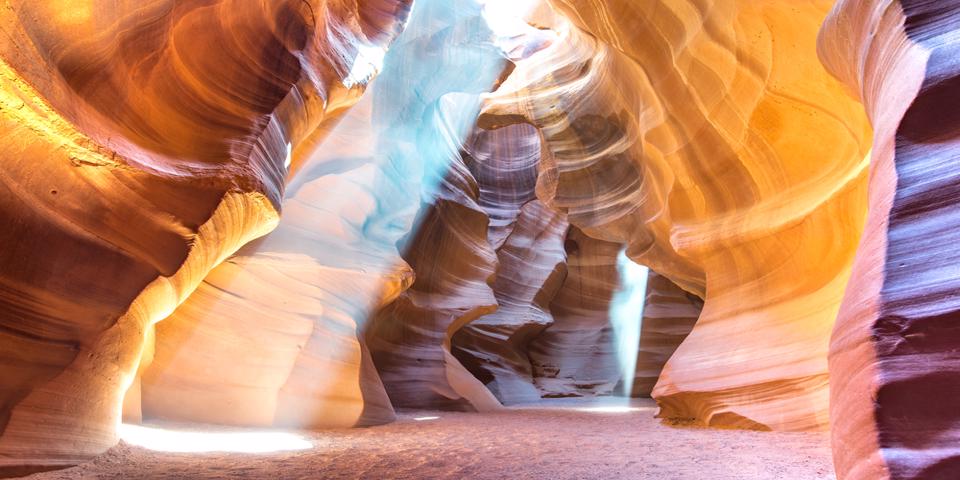
You already know that Antelope Canyon is a very popular location for photography, but it’s also an important piece of the tourism business for the Navajo Nation. Until 1997, it was one of the best-kept secrets in Northern Arizona. At that time, the Navajos made the canyon into a Navajo Tribal Park. The road leading to Antelope Canyon is gated, and entry is restricted by the Navajo Nation to authorized guided tours.
It is not possible to visit Antelope Canyon on your own. There are quite a few authorized tour operators; while you may be able to get a tour “on the fly,” it’s highly recommended you book months in advance. One reason for the required guided tours is that the danger of flash flooding in the canyon can be extreme.
Few red sandstone formations are as awe-inspiring or as picture-perfect as Antelope Canyon. With 120-foot tall undulating walls, this magnificent slot canyon is a truly monumental sandstone sculpture, crafted by Mother Nature. The slot canyon is famous for its gently waving walls and the beams of light that shine down, creating a supernatural glow. The canyon draws nature-lovers from all over the world to its mysterious and timeless beauty. It’s undeniable — the canyon is truly a nature photographer’s dream come true.
Antelope Canyon was produced by eons of water erosion. Consequently, the Navajo name for the canyon is “Tse’ bighanilini,” meaning “the place where water runs through rocks.” The canyon got its English name because it was once home to herds of pronghorn antelope. The canyon is divided into two sections, Upper and Lower Antelope Canyon. Depending on the tour you take, you can see one or both sections.
Upper Antelope Canyon
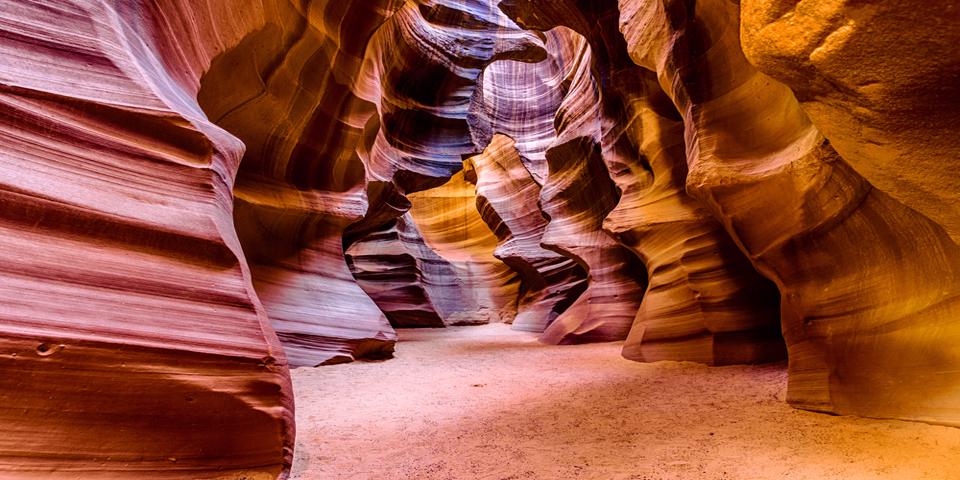
Upper Antelope Canyon is the place called “Tse’ bighanilini,” by the Navajo. It’s the most popular with tourists, because the entrance, as well as the entire length, are at ground level. Also, the photogenic beams of sunlight are much more common here than in the lower canyon. The sunbeams start to peek into Upper Antelope Canyon from March 20 and vanish by October 7. During the winter the colors inside the canyon are more muted.
The Upper part of Antelope Canyon is the most easily accessible. It’s only a short walk and there are no stairs or ladders. If you have small children with you or mobility issues, this is the tour you want to take, but be sure to book your tour early.
Lower Antelope Canyon
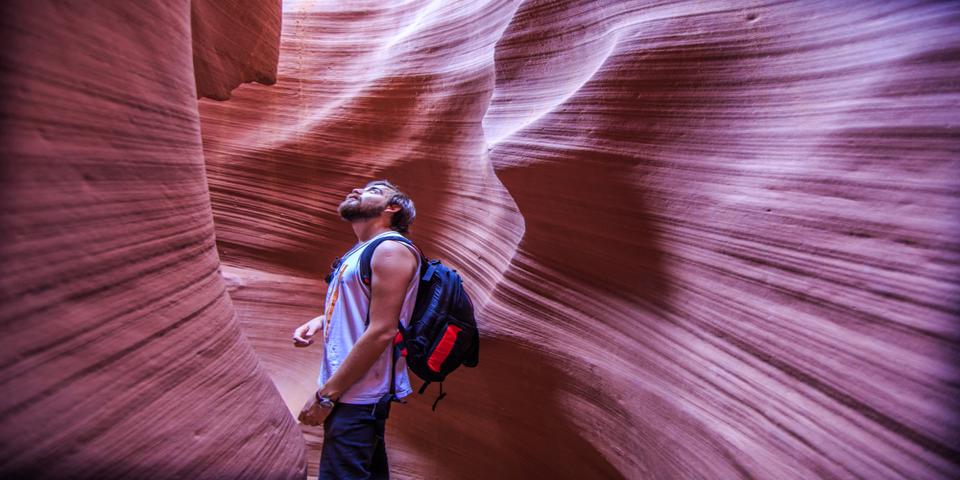
Lower Antelope Canyon is called “Hazdistazí,” by the Navajo. That means “spiral rock arches.” This part of the canyon is actually several miles from Upper Antelope Canyon.
Even with the stairways, this is a more difficult tour than the upper canyon. There are five flights of stairs, and the canyon is longer and narrower than the upper canyon, while the footing is sometimes difficult. Also, sand constantly falls from the cracks above, making the stairs slippery. This is not a tour for small children or persons with mobility issues. However, it is a tour for the hardy adventurer.
The light beams peak around midday in Lower Antelope Canyon, and photography-only tours are available. Unfortunately, photographers can’t bring a tripod.
Horseshoe Bend
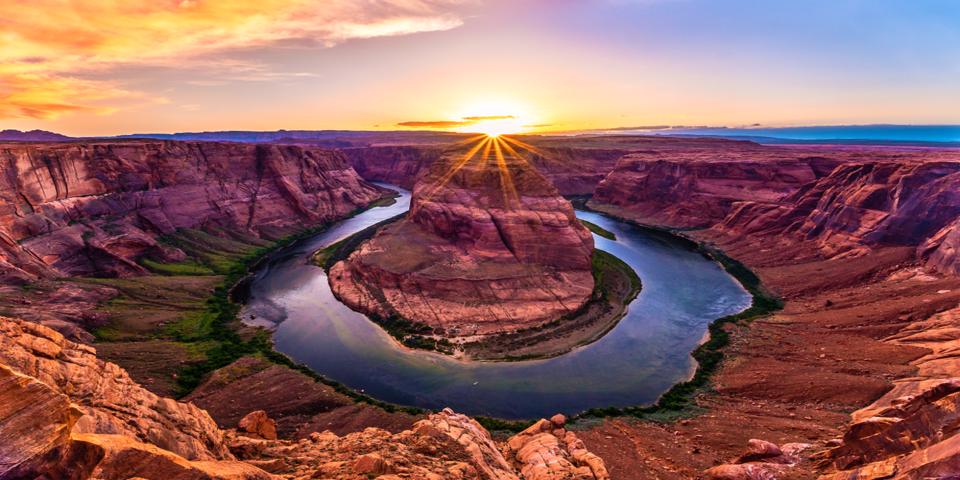
Horseshoe Bend is accessible without a guided tour; you can park just off Hwy 89, between mileposts 544 and 545, four miles southwest of Page. However, due to the pull-off’s recent popularity on social media, there is a charge for the overlook; passenger vehicles, including motorhomes, are $10.
Once you’re parked, you will hike ¾ of a mile to the overlook; be aware, the trail is sometimes steep and there are places with deep sand. While it’s a relatively short hike, it can be challenging for some, especially in the heat of the summer. Don’t forget your camera — the view is the reason you’re here!
If you don’t want to risk the hike, you can also fly over it; there are airplane tours daily from the Page Municipal Airport.
You can also take a half-day rafting trip, where you can see Horseshoe Bend from the river level. There are no rapids, so it’s easy and safe and appropriate for kids as young as four.
The overlook is perched 1,000 feet above the bend, and 4,200 feet above sea level, and it faces due West. Because of this, the afternoon is not the best time to get a picture, since you’ll be facing directly into the sun. Likewise, early morning is not a good time for photos, since the Colorado River will be hidden in shadows. However, the river is out of the shadow by mid to late morning and will still be visible through the early afternoon.
The spectacular glowing colors of Horseshoe Bend are due to the rich blend of minerals, including hematite, garnet, and even platinum. Horseshoe Bend is part of Glen Canyon of the Colorado River, and it’s an example of an “entrenched meander.” Horseshoe Bend was created when the water of the Colorado River followed the natural path of least resistance.
It’s been a long and busy day, and there’s plenty of lodging in and around Page if you’d like to spend the night. However, if you’re going during the peak season, it’s best to book a room ahead of time. While Page seems very out of the way, it’s also a very popular tourist spot. People not only come for Antelope Canyon and Horseshoe Bend, but Lake Powell is also a popular place for boating with the folks in Southern Utah. Enjoy your trip, and be prepared to take tons of pictures.

